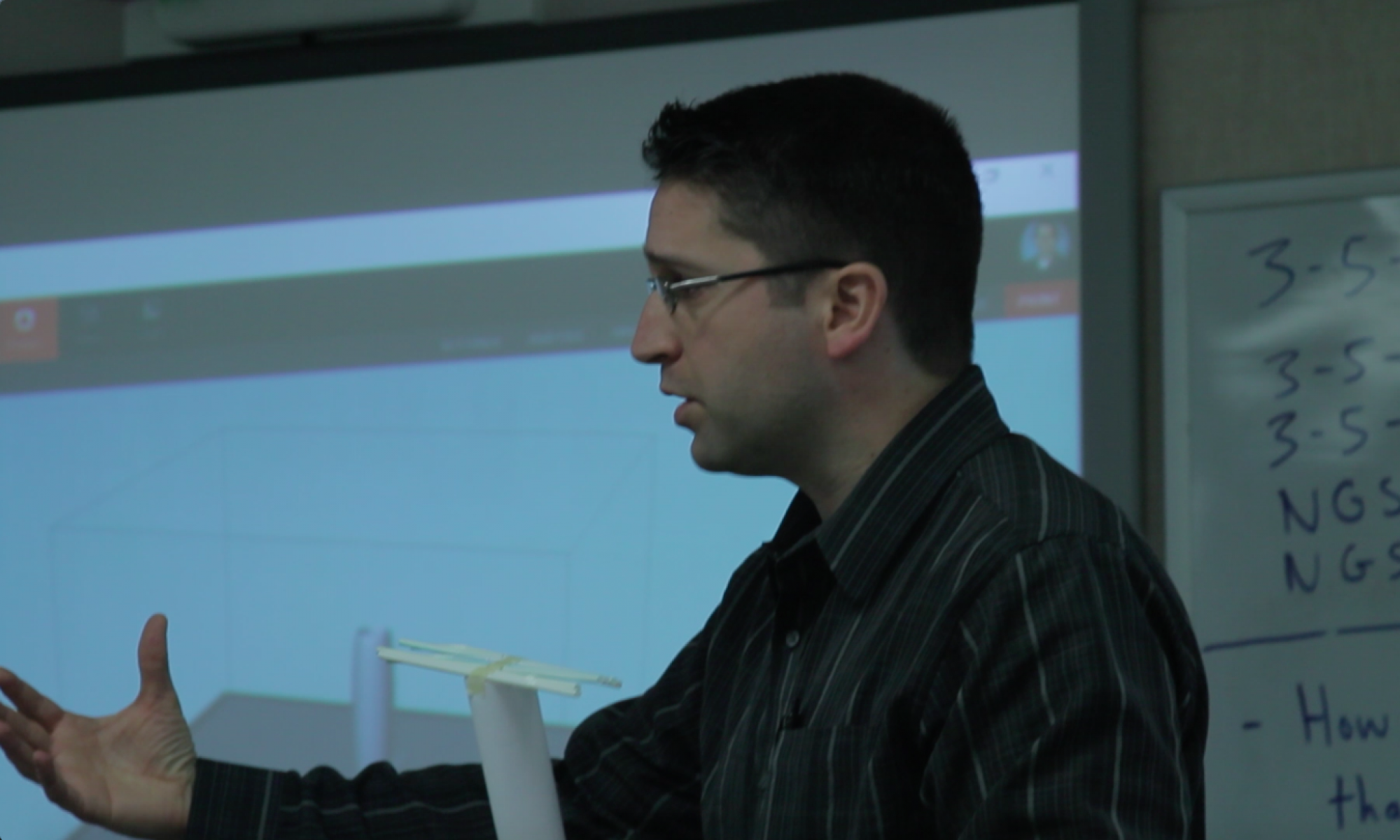
As educators, we are constantly searching for new ways to meaningfully engage our students. Amidst a wave of requirements, numerous standards, and unforeseen circumstances, it is easy to get lost in the overwhelming list of “have to’s” forced on us. So much so that when students ask the inevitable “why are we learning this” question, it is tempting to default to the “because I said so” answer. This response is both well known and disappointing to students while also feeling empty and unsatisfactory to the adult providing the answer. We want to be better than this, we want our students to care about their learning, and we want the education we provide to be relevant. One meaningful way to approach this conundrum amidst the chaos is to look to social justice issues and ways that that they overlap with STEM. The intersection of these two pedagogical paradigms engages a wide variety of students, provides relevant learning opportunities, and all while potentially addressing a wide swatch of standards.
Why Social Justice?
If we as educators don’t start the conversation and work against the inherent injustices within the framework of systems that we and our students function then who will? When it comes to wealth, opportunities, and societal privileges, kids don’t get to choose these things. If our job is to truly prepare our students for their futures then our job is also to prepare students to change those futures for the better as well. Students are always asking why? And, rightfully so. When students see that they can help others and improve the world around them in a concrete way then that answers their why at a visceral level.
Why STEM?
Ensuring diversity of representation as we prepare all students for a future that doesn’t exist yet is important, and that future will be heavily dependent upon STEM understanding and applications. Someone who is “STEM literate” understands this and can apply that working knowledge in a variety of contexts and real-world situations. Overall, we need STEM literate workers to fill the employment gap while simultaneously addressing the wage gap. Just as important, we need STEM literate citizens that understand the consequences of their vote on issues such as climate change and genetic modification.
Why the Combination of Social Justice and STEM?
Social Justice is a collective effort toward addressing many of the issues facing society and STEM provides a way to address many of these challenges in new, unique, and innovative ways. Together, Social Justice and STEM can provide an effective platform for identifying, addressing, and even solving a lot of the modern societal issues that exist. STEM education opportunities provide a variety of ways to magnify student voice which is critical to empowering students’ ability to effect change on social justice issues. Ironically, a major issue of inequity centers around underrepresented populations in STEM fields. This in and of itself is a social justice issue. These same populations are inherently interested in solving social justice issues so when STEM is introduced in this manner then the diversity of interest in STEM education increases.
What Does Combining Social Justice and STEM Look Like?
Combining Social Justice and STEM in education can take on a variety of forms. Social Justice issues can be big problems that occur at a state, national, or even global level. The same is true for STEM issues. One example would be the climate crisis and the social impact that this has on exacerbating equity issues across society. A solution this combined issue would be one example. Global problems are often difficult for students to relate to so looking at the local community can help improve relevance, engagement, and understanding. Food scarcity for local populations within the community may be addressed or even solved by a STEM-based solution. Younger students, and, honestly, students of all ages, may also benefit from looking at age-appropriate social justice issues in their school community. Is everyone being included at recess regardless of differences? How can this be addressed? Is there a STEM-based solution that might help?
How Does One Begin to Go About Combining Social Justice and STEM?
Meaningful and engaging learning opportunities with the “why” built into the activities provide students with relevancy and reason for their learning. Starting with what students know is arguably the easiest way to build on background knowledge when attempting a new idea or approach in the classroom. School-based solutions have the added advantage of students being able to help their peers and benefit from their solutions. This could be something as simple as friendship solutions, conflict resolution, and addressing litter. Local community issues allow students to engage with what they know at a broader level. Making a difference in what may seem like their broader world can also build confidence combined with important civic engagement lessons. Issues such as retirement community support, homeless shelter needs, and overall safety provide some examples. Global problems provide an opportunity to raise student awareness to a broader level. Many STEM-based resources allow students to now participate in a broader dialogue. Looking at problems to evaluate and propose solutions for such as world hunger, education, and basic health needs are just some of the possible examples.
All of these potential problems, topics, and approaches make for potential classroom projects. A guiding pedagogical structure can be very helpful when trying to figure out how to plan for multiple areas of focus within the scope of the overall learning. PBL pedagogies are a great place to start. Select a school of thought such as project-based learning, problem-based learning, place-based learning, or another, and then start small. A great STEM mantra to keep in mind when designing a potential lesson or unit that blends social justice and STEM is to KISS: Keep It Super Simple, learn alongside your students one step at a time, and “be the change you want to see in the world”.
References
- International Society for Technology in Education. (2019). ISTE Standards For Coaches. ISTE. Retrieved from https://www.iste.org/standards/for-coaches
- Careless, J.E. (2015). Social Media for Social Justice in Adult Education: A Critical Framework. JOURNAL OF TEACHING AND LEARNING, VOL.10 (NO. 1), pp. 13-26.
- Kukulska-Hulme, A., Beirne, E., Conole, G., Costello, E., Coughlan, T., Ferguson, R., FitzGerald, E., Gaved, M., Herodotou, C., Holmes, W., Lochlainn, C.M., Mhichíl, M.N.G., Rienties, B., Sargent, J., Scanlon, E., Sharples, M., Whitelock, D. (2020). Innovative Pedagogy 2020. National Institute for Digital Learning. Retrieved from https://iet.open.ac.uk/file/innovating-pedagogy-2020.pdf
- Miller, A. (May, 2015). Avoiding Learned Helplessness. Edutopia. Retrieved from http://www.edutopia.org/blog/avoiding-learned-helplessness-andrew-miller
- LEXICO. (2020). LEXICO Powered by OXFORD. Dictionary.com and Oxford University Press. Retrieved from https://www.lexico.com/en/definition/social_justice
- Teaching Tolerance. (2016). A Framework for Anti-bias Education. The Southern Poverty Law Center. Retrieved from https://www.tolerance.org/frameworks/social-justice-standards
- Basham, J.D. & Marino, M.T. (2013). Understanding STEM Education and Supporting Students Through Universal Design for Learning. Teaching Exceptional Children, Vol. 45 (No. 4), pp. 8-15.
- Bill & Melinda Gates Foundation. (2014, December). Teachers Know Best: Teachers’ Views on Professional Development. Bill & Melinda Gates Foundation. Retrieved from http://k12education.gatesfoundation.org/download/?Num=2336&filename=Gates-PDMarketResearch-Dec5.pdf
- Hall, T.E., Cohen, N., Vue, G., & Ganley, P. (2015). Addressing Learning Disabilities With UDL and Technology: Strategic Reader. Learning Disability Quarterly, Vol. 38 (No. 2), pp. 72-83.
- Reed, M. (2018, July 9). Making STEM Accessible to All. Edutopia. Retrieved from https://www.edutopia.org/article/making-stem-accessible-all
